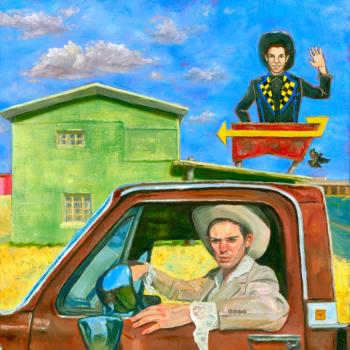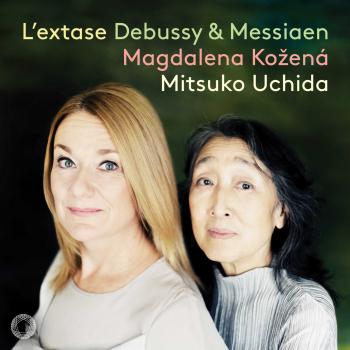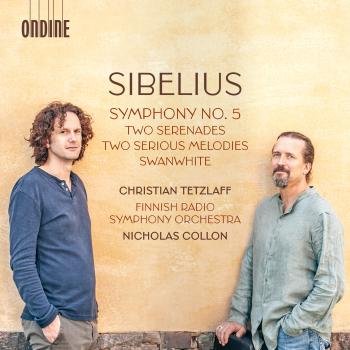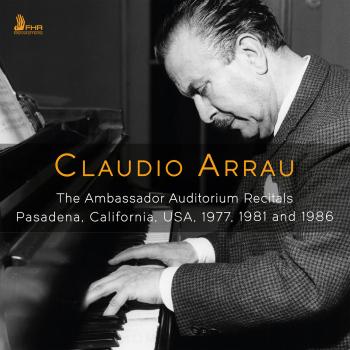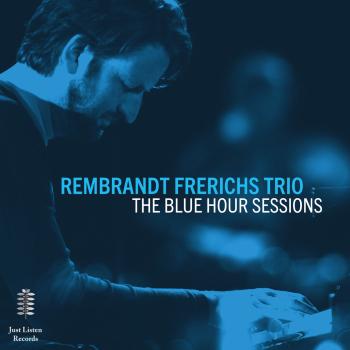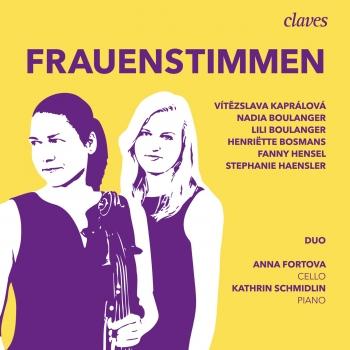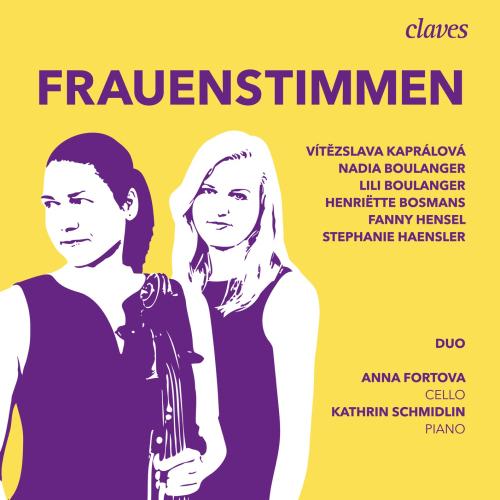
Frauenstimmen Anna Fortova & Kathrin Schmidlin
Album info
Album-Release:
2020
HRA-Release:
27.02.2021
Label: Claves Records
Genre: Classical
Subgenre: Chamber Music
Artist: Anna Fortova & Kathrin Schmidlin
Composer: Vítězslava Kaprálová, Nadia Boulanger, Lili Boulanger, Henriëtte Bosmans, Fanny Hensel, Stephanie Haensler
Album including Album cover
- Vítězslava Kaprálová (1945 - 1940):
- 1 Ritornell Op. 25 für Violoncello und Klavier: Vivo 04:23
- Nadia Boulanger (1887 - 1979): Trois pièces pour violoncelle et piano:
- 2 Trois pièces pour violoncelle et piano: I. Modéré 03:01
- 3 Trois pièces pour violoncelle et piano: II. Sans vitesse et à l‘aise 01:51
- 4 Trois pièces pour violoncelle et piano: III. Vite et nerveusement rythmé 02:38
- Lili Boulanger (1893 - 1918): Trois morceaux pour piano:
- 5 Trois morceaux pour piano: I. D‘un vieux jardin 02:46
- 6 Trois morceaux pour piano: II. D‘un jardin clair 02:15
- 7 Trois morceaux pour piano: III. Cortège 01:38
- Henriëtte Bosmans (1895 - 1952): Sonate voor violoncel en piano:
- 8 Sonate voor violoncel en piano: I. Allegro maestoso 09:37
- 9 Sonate voor violoncel en piano: II. Un poco allegretto 04:31
- 10 Sonate voor violoncel en piano: III. Adagio 03:10
- 11 Sonate voor violoncel en piano: IV. Allegro molto e con fuoco 06:06
- Fanny Hensel (1805 - 1847): Das Jahr. 12 Charakterstücke für das Forte-Piano:
- 12 Das Jahr. 12 Charakterstücke für das Forte-Piano: Mai. Frühlingslied. Allegro vivace e gioioso 02:49
- 13 Das Jahr. 12 Charakterstücke für das Forte-Piano: Juli. Larghetto 03:18
- 14 Das Jahr. 12 Charakterstücke für das Forte-Piano: September. Am Flusse. Andante con moto 03:23
- 15 Das Jahr. 12 Charakterstücke für das Forte-Piano: November. Mesto 05:16
- Stephanie Haensler:
- 16 „Ni dónde, ni cómo“ für Violoncello und Klavier 06:59
Info for Frauenstimmen
Compositions from both East and West here bring together the powerful voices of six women composers from contrasting cultures. Their music ranges from the Romantic period via Impressionism and Neoclassicism to the present. Vivid impressions alternate with absolute music, strict sonata forms with free forms full of delicate musical poetry.
The standard repertoire of the 19th and 20th centuries, dominated by the male “Bs” Beethoven, Brahms, Bruckner, Bartók and others like them, is increasingly being freshened up by works either long forgotten or suppressed that were composed by women who just happen to have the same initial for their surnames, such as Grażyna Bacewicz, Agathe Backer-Grøndahl, Elsa Barraine, Amy Marcy Beach, Sylvie Bodorová, Mel Bonis, Henriëtte Bosmans, Lili and Nadia Boulanger and Joanna Bruzdowicz.
Lili Boulanger and Vítězslava Kaprálová are united by a tragic fate, for both died at the age of just 24.
Vítězslava Kaprálová (1915-1940) was the daughter of Janáček’s master student Václav Kaprál. She was born in Brno, and was early on recognised as a musical Wunderkind. She took her first piano lessons at the age of five, and began to compose at nine. She trained at the Prague Conservatory, studying composition under Vítězslav Novák, a former student of Dvořák’s, and conducting with Václav Talich. From 1937 onwards she lived in Paris, where she competed her composition studies with Bohuslav Martinů. She enjoyed a resounding success in 1938 when she conducted the world première of her own Military Sinfonietta at the 16th Festival of the International Society for Contemporary Music in London. Her musical motto was: “I want to show the men how it’s done!”. She was only able to complete one of two Ritornelli that she had planned in the year of her death. As can be heard here, it oozes energy.
Nadia Juliette Boulanger (1887-1979) was born and died in Paris. Although she ceased composing at 25, she made her name as a composition teacher. Of her Trois Morceaux (“Three pieces”), the first two began as early organ pieces, while the third is an original work enriched with Spanish elements.
The Parisian composer Marie-Juliette Olga Lili Boulanger (1893-1918) achieved overnight fame when she became the first woman to win the legendary Grand Prix de Rome, with her cantata Faust et Hélène. She was often sick as a child, and she died on 15 March 1918, just ten days before her role model Claude Debussy. It was in Rome in 1914 that she composed the expressive, atmospheric scenes conjured up in her D’un vieux jardin (“Of an old garden”), D’un jardin clair (“Of a bright garden”) and Cortège. The first piece is notable for its bold harmonic shifts, while the other two reveal the influence of Debussy.
Henriëtte Hilda Bosmans (1895-1952) was born in Amsterdam, where she studied at the Conservatory and also privately with the composer Willem Pijper. She composed numerous songs to French texts, several solo works with orchestra, a string quartet and the Sonata in A minor for cello and piano (1919). Mighty chords open the majestic first movement and also close the fourth – thereby closing the circle.
Felix Mendelssohn Bartholdy’s sister Fanny Caecilia Hensel-Mendelssohn (1805-1847) was born in Hamburg, and in 1829 married the painter Wilhelm Hensel. She died in Leipzig. Her cycle Das Jahr (“The year”) of 1841 comprises 12 character pieces, and was composed as a reminiscence of a trip to Italy. The springlike “May” seems to bear within it the spirit of a song without words. The middle section of “July” has a dramatic climax, with ominous tremolandi in the bass; this offers the greatest possible contrast to the melancholic sentiments express in “September. By the river”. In “November”, we hear an autumn storm, “appassionato”.
Stephanie Haensler was born in Baden in 1986 and studied with Robert Zimansky (violin) and Isabel Mundry (composition) at the Zurich University of the Arts. Her composition “ni dónde, ni cómo” (“neither where nor how”) is based on the text of a Chilean women’s artists’ collective, protesting about violence against women. She composed it to a commission from Kathrin Schmidlin and Anna Fortova to commemorate the fiftieth anniversary of women’s suffrage in Switzerland in 2021. She here explores the question as to where freedom begins, and what it means to have a voice and the right to express yourself and to have a say in things.
The many sophisticated expression markings and performance instructions here use the subtlest emotional nuances to provide a voice to oppressed, maltreated women. This work’s profound exploration of sound and noise displays the brilliant mastery of this socially committed composer.
Anna Fortova, cello
Kathrin Schmidlin, piano
Anna Fortova
studierte bei Daniel Veis an der Akademie der musischen Künste in Prag, Musikpädagogik an der Hochschule für Musik Basel FHNW (Preis für die beste Masterarbeit) und Barockcello bei Petr Skalka an der Schola Cantorum Basiliensis. Mehrfach nahm sie erfolgreich an internationalen Wettbewerben teil. Neben der Zusammenarbeit mit tschechischen und schweizerischen Symphonie- und Kammerorchestern (u.a. Collegium Musicum Basel) widmet sie sich seit Jahren aktiv der Kammermusik in verschiedenen Ensembles und gleichzeitig auch der pädagogischen Tätigkeit (Musikschule Allschwil). Musikalische Grenzen überschreitend wirkte sie im Streichensemble Eve Quartett mit dem Jazzmusiker Emil Viklicky und auch in Folkrock-Bands mit.
Kathrin Schmidlin
Die junge Schweizer Pianistin Kathrin Schmidlin, geb. 1990, wuchs in einer musikalischen Familie auf. 2012 schloss sie ihr Bachelor-Studium bei Prof. Karl-Andreas Kolly an der Zürcher Hochschule der Künste ab, 2015 erlangte sie bei Prof. Wolfgang Manz an der Hochschule für Musik Nürnberg den Master of Performance. An der Hochschule für Musik Basel FHNW studierte sie bei Prof. Tobias Schabenberger im Studiengang Master Musikpädagogik mit Nebenfach Liedgestaltung bei Prof. Jan Schultsz und schloss im Sommer 2017 erfolgreich ab.
Kathrin Schmidlin ist mehrfache Preisträgerin nationaler und internationaler Wettbewerbe (u.a. 2007 1. Preis am Schweizerischen Jugendmusikwettbewerb und 2. Preis am AIMA Euterpe Competition in Rom 2016). 2013 wurde ihr ein Stipendium der Bachwoche Ansbach zugesprochen.
Wichtige Impulse erhielt sie u.a. von Brigitte Meyer, Konstantin Lifschitz, Henri Sigfridsson und Hartmut Höll. Ihre Auftritte führten sie nach Bayreuth, ins Theater Basel, in das Museum am Dom Trier und an das Menuhin Festival in Gstaad.
Zusammen mit der tschechischen Cellistin Anna Fortova erscheint 2021 ihr Debüt-Album beim Label Claves Records.
Auch im Bereich Musikvermittlung ist Kathrin Schmidlin aktiv; so organisierte sie eine Konzertführung am Festival „KlangBasel“ und konzipierte im Rahmen ihrer Masterarbeit ein Kinderkonzert, um die Epochen der Musik für Kinder spielerisch zu vermitteln. An der Jahrestagung 2017 der EPTA (European Piano Teachers Association) Schweiz durfte sie dieses Projekt erfolgreich vorstellen und ist seit Herbst 2018 im Vorstand der EPTA Schweiz.
Kathrin Schmidlin unterrichtet Klavier an der Musikschule Konservatorium Zürich.
This album contains no booklet.


